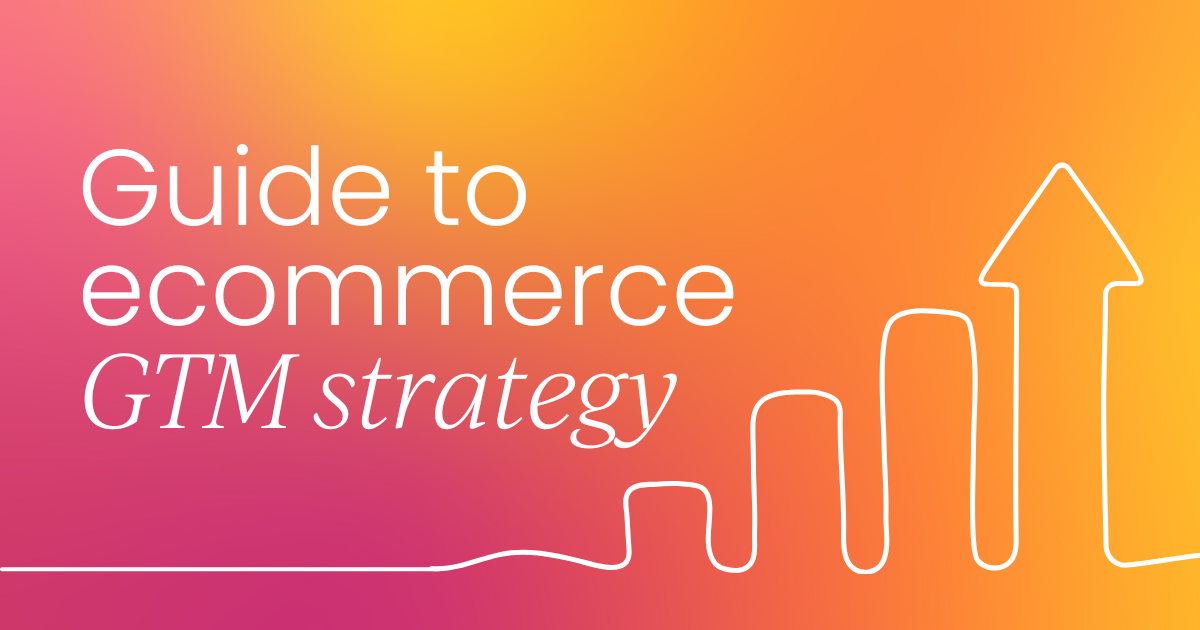Today, mastering go-to-market alignment could be the difference between hitting your targets and watching them sail by.
It's not just about having the right players on your team – it's about getting them to play the same game, with the same rulebook. And trust us, the stakes are high.
So in this article, we'll dive into what go-to-market alignment really means, why it's the foundation of successful business growth, and most importantly, how you can achieve it in your organization.
We'll explore practical strategies, tackle common challenges, and provide actionable insights to help you transform your go-to-market approach.
Ready to take your go-to-market strategy to the next level? Let's dive in.
- What is go-to-market alignment?
- Why is go-to-market alignment important?
- Core elements of go-to-market alignment
- 7 key strategies for achieving go-to-market alignment
- Measuring the success of your GTM alignment efforts
- Overcoming common challenges in GTM alignment
- Successful go-to-market alignment in action
- Conclusion
- FAQs
What is go-to-market alignment?
Let's start with the basics. Go-to-market alignment is all about getting your entire organization moving in the same direction when it comes to your go-to-market strategy.
But why is this alignment so crucial? Well, imagine trying to win a tug-of-war with half your team pulling in one direction and the other half pulling the opposite way. Not very effective, right? That's what happens when your GTM strategy isn't aligned across departments. You end up with wasted efforts, confused customers, and missed opportunities.
You need go-to-market alignment to keep each component of your strategy synchronized toward the same key goals and working effectively.
Why is go-to-market alignment important?
Let's break down some of the key benefits you can expect when you nail your GTM alignment:
- Improved efficiency and productivity: When everyone's on the same page, you'll see less duplication of efforts and more streamlined processes.
- Enhanced customer experience: A unified approach means customers get a consistent message and experience across all touchpoints.
- Faster revenue growth: Aligned organizations see significantly faster revenue growth.
- Better resource allocation: With clear goals and strategies, you can make smarter decisions about where to invest your time and money.
- Increased agility: An aligned team can pivot more quickly in response to market changes or new opportunities.

Core elements of go-to-market alignment
Now that we've covered the "why," let's dive into the "what." To ensure everyone’s aligned on your GTM strategy, you’ll need to focus on these core elements:
- Unified leadership and vision: It all starts at the top. Your leadership team needs to be on the same page about your company's direction and goals.
- Clear definition of ideal customer profile (ICP) and buyer personas: You need to know exactly who you're targeting and what makes them tick.
- Consistent messaging and brand identity: Your message should be crystal clear and consistent across all channels and departments.
- Integrated data and visibility: Break down those data silos! All teams should have access to the same customer and market insights.
- Collaborative process mapping: Map out your customer journey and ensure all teams understand their role in it.

7 key strategies for achieving go-to-market alignment
Alright, now for the good stuff. How do you actually make GTM alignment a reality in your organization? Here are some tried-and-true strategies:
- Establish shared goals and metrics: Get everyone rallying around the same objectives. These could include things like revenue targets, customer acquisition costs, or customer lifetime value.
- Create a customer-centric revenue cycle: Map out your entire revenue cycle from a customer's perspective, not just your internal processes.
- Develop a comprehensive GTM handbook: This should be your go-to resource for everything GTM-related in your organization. Use it to outline the why, how, and what you do to get, grow, and keep customers.
- Implement cross-functional teams: Break down those departmental silos by creating teams that span different functions.
- Utilize alignment-focused software tools: Tools like Asana, Jira, or even a good old-fashioned collaborative Google Doc can help keep everyone on the same page.
- Regular alignment meetings: Set up weekly or bi-weekly meetings to ensure ongoing communication and alignment across teams.
- Create a shared vocabulary: Ensure everyone in your organization is using the same terms and definitions when discussing GTM strategies. This will make sure nothing is lost in translation.

Overcoming common challenges in GTM alignment
Of course, achieving perfect alignment isn't all smooth sailing. You're bound to encounter some challenges along the way. Here are a few common ones and how to tackle them:
⚒️ Breaking down silos
Old habits die hard, and some teams might be resistant to change. Combat this by fostering a culture of collaboration and emphasizing the benefits of alignment for all teams.
⚖️ Balancing short-term goals with long-term strategy
It's easy to get caught up in day-to-day targets and lose sight of the bigger picture. Regular strategy reviews can help keep everyone focused on long-term objectives.
🔄 Adapting to market changes
Markets evolve, and your GTM strategy needs to evolve with them. Build in regular review processes to ensure your strategy stays relevant.
🤝 Maintaining alignment as the company grows
As your team expands, keeping everyone aligned becomes more challenging. Invest in robust onboarding processes and regular training to keep new hires up to speed.

Measuring the success of your GTM alignment efforts
How do you know if your alignment efforts are paying off? Here are some key performance indicators (KPIs) to keep an eye on:
Revenue metrics
- Sales win rates
- Revenue growth rate
- Average deal size
Customer metrics
- Customer acquisition cost
- Customer lifetime value
- Net promoter score
- Customer churn rate
Internal metrics
- Employee satisfaction scores
- Cross-department collaboration rates
- Content usage by sales teams
- Handover efficiency between departments
But remember, improvement in these metrics doesn't happen overnight. Be patient and look for trends over time.

Successful go-to-market alignment in action
To dive into this a little further let's look at a hypothetical example of successful GTM alignment.
Imagine a B2B software company that was struggling with slow growth and high customer churn. They decided to overhaul their GTM strategy with a focus on alignment. Here's what they did:
- They clearly defined their ICP and buyer personas, ensuring all teams were targeting the same types of customers.
- They implemented a shared CRM system, giving all teams visibility into the customer journey.
- They created cross-functional "tiger teams" for each major account, including members from sales, marketing, product, and customer success.
- They developed a comprehensive GTM handbook and made it required reading for all employees.
- They established shared KPIs that spanned across departments, encouraging collaboration.
Just imagine the potential increase in sales win rates, employee satisfaction scores, and customer churn reduction. Not too shabby!
Conclusion
There you have it, folks – the lowdown on go-to-market alignment. We've covered what it is, why it matters, and how to make it happen in your organization. Now it's your turn to take action.
Start by assessing your current level of alignment. Where are the gaps? What's working well? Then, pick one or two areas to focus on improving. Remember, alignment is an ongoing process, not a one-time fix.
By prioritizing GTM alignment, you're setting your organization up for faster growth, happier customers, and a more cohesive, efficient team. I don’t know about you, but that sounds like a winning combination!
FAQs
What tools are essential for go-to-market alignment?
While the specific tools might vary by company size and industry, there are a few must-haves for most organizations. A robust customer relationship management (CRM) system is typically at the core – it's your single source of truth for customer data.
You'll also want a good project management platform where different teams can collaborate and track progress. Many companies find success with communication tools that facilitate quick discussions between departments.
The key is choosing tools that integrate well with each other and that your team will actually use. Remember, though – tools are just enablers. The real magic happens when you have the right processes and people to use them effectively.
Can small businesses achieve go-to-market alignment, or is it only for enterprises?
Absolutely, small businesses can (and should!) achieve go-to-market alignment. In fact, smaller companies often have an advantage here – with fewer people and less bureaucracy, it can be easier to get everyone on the same page.
The principles remain the same regardless of company size. The main difference is scale and complexity. While an enterprise might need formal systems and processes to keep thousands of employees aligned, a small business might achieve the same goals through regular team meetings and shared documents. The key is to start with the basics and scale your alignment efforts as your company grows.
How does go-to-market alignment affect customer acquisition costs?
When your go-to-market efforts are aligned, you typically see a positive impact on customer acquisition costs (CAC). Think about it – when your marketing team better understands what kinds of leads your sales team can actually close, they can target their efforts more effectively. When your product team is aligned with customer needs, your sales cycle gets shorter because what you're selling matches what customers want.
This efficiency means you're spending less to acquire each customer. Plus, aligned teams can often spot and fix problems in the customer journey faster, preventing leaks in your sales funnel that might otherwise drive up costs.
What roles should be involved in go-to-market alignment meetings?
This is a common stumbling block for many companies. While it might be tempting to invite everyone to alignment meetings, that's not always practical or necessary. At a minimum, you'll want representatives from marketing, sales, product, and customer success. These core teams should meet regularly – maybe weekly or bi-weekly.
It's also helpful to have someone from the executive team involved periodically to provide strategic direction and remove any roadblocks. The key is to find the right balance – enough perspectives to be comprehensive, but not so many that meetings become unproductive.
Remember, the goal isn't just to have meetings, but to make decisions and drive actions that improve alignment.

Enroll now and access all-important insights that’ll help you establish yourself as a strategic partner.
Develop the exceptional collaboration and communication skills necessary to deliver value and make a meaningful impact within your organization.








